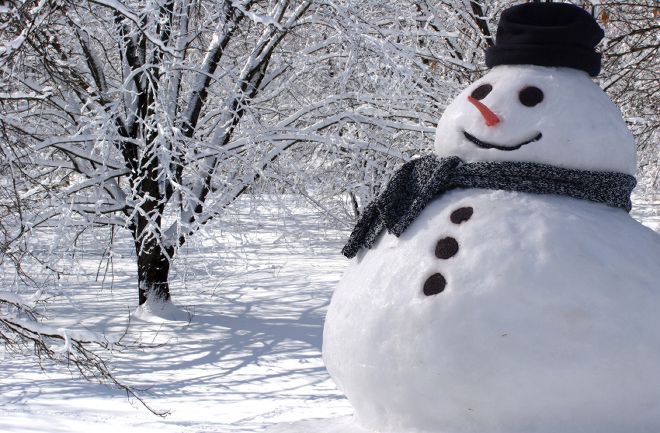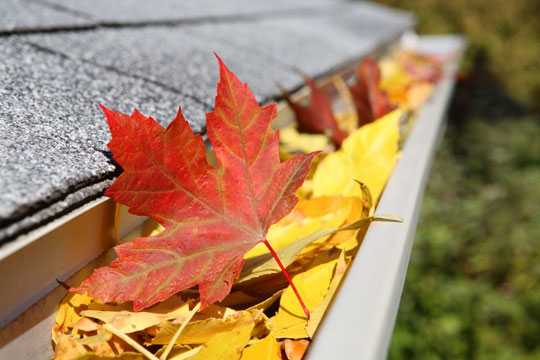
Although the winter season doesn’t officially kick off for a few more weeks, it’s time to start thinking of how you’ll protect your home this winter! After all, the winter chill is expected to be fairly severe in late 2014 and early 2015. You’ll want to make sure you take precautionary steps to safeguard one of your most treasured investments. Although a few of the items on our checklist require professional assistance, most of the tasks are relatively simple. Investing a little time and energy before the cooler temperatures arrive can help reduce your energy bills and save you from maintenance-related headaches in the future! Review our checklist below to make sure your home is ready for Jack Frost and the cold snap that is sure to come!
Disconnect your Garden Hoses
As soon as freezing temperatures are predicted, disconnect your garden hose and drain your outdoor pipes to prevent damage. Leaving the garden hoses connected during a cold snap can lead to pressure build-up in the water lines inside your home. A water line leak or break could cause severe damage.
Cover Your Faucet
Visit your local hardware store and purchase a hose bib cover to protect your exterior faucet! Purchasing a jacket or frost cover for your faucet will not only protect the outdoor fixture but will also safeguard the fixture from freezing temperatures reaching the interior water lines of your home. These covers are inexpensive and easy to install!
 Call a Chimney Sweep
Call a Chimney Sweep
Before you cozy up by the fire this winter, call a reliable chimney sweep. Have a professional check to make sure your fireplace and ventilation system are in great condition. While you’re at it, make sure to have a professional examine any heating appliances in your home that will burn gas, oil, wood, or coal during the season. Preventing chimney fires and carbon monoxide leaks will allow you to rest easy this winter. You’ll truly be able to curl up by the fire and relax with a steaming cup of hot cocoa.
Turn Off and Remove Water Timers
Water timers may be necessary during our scorching summer months here in the South. They are not necessary for the winter. Turn them off or remove them completely to avoid damage to the timer. Instead of using water timers in the winter, allow the remaining leaves of fall to nourish your lawn. See the next step for details!
Use Fall Leaves as a Resource
Instead of raking up the leaves of fall, use them as a resource to nourish your lawn. Fall leaves are considered gardener’s gold because of the nutrients they provide. Before the leaves form a thick blanket over your lawn, mow and shred the leaves leaving them to break down naturally. Chopped leaves deposited right on the lawn provide nutrients to the grass and improve the soil preparing your lawn for the upcoming spring.
Lend your Water Heater a Helping Hand
Whether you’ve invested in a tankless water heater or a conventional water heater, your plumbing could use a hand this winter. Consider wrapping your pipes and water heaters in specially engineered insulation designed for plumping. These products can be found at your local hardware store! Wrapping your water heaters will prevent freezing and will also help to drastically reduce the cost of your energy bills.
Schedule a Heating System Tune-Up
Your heating system may need a little TLC after sitting dormant all spring and summer. Don’t wait until the coldest day of the year. Call a professional now to check that your furnace or heat pump is functioning properly and can be counted on during cold spells. A professional contractor will also check for deadly carbon monoxide leaks which are more prevalent during cool winter months! Best of all, these yearly tune-ups are relatively inexpensive and can save you from many shivers and chills in December, January, and February.
Batten Down the Hatches with Caulk
You’re not ready for winter if you haven’t engaged in a little caulking action! Exterior caulking is necessary is keep the cooler temperatures trapped exactly where they need to be outside. For exterior caulking, we recommend you use a silicone-based formula as it is durable and impervious to the elements. Exterior caulking can also help protect against unwanted moisture build-up in your home leading to mold and mildew issues. If you want to go caulk crazy then check for interior gaps as well. Faucets, vents, pipes, and electrical outlets can be small, but significant sources of heat loss.
Clean the Gutters
Although beautiful in the autumn, fall foliage is not so welcome in the early stages of winter. Pesky twigs, leaves, and branches may still be trapped in the gutters of your home leading to poor water circulation. This build-up can cause roof leaks and water damage to your trim and siding. This is particularly dangerous when ice begins to form. To protect from build-up, clear and clean your gutters during the early stages of winter. Be sure to check for missing or damaged gutters as these can also be harmful to the exterior of your home.
Reverse Your Fans
Did you know that some specific types of ceiling fans have a reverse function? If yours does, turn your fan’s blades in a clockwise direction. The clockwise direction acts as a partner to your heating system. While your heating system is pumping heat through your home, ceiling fans in the reverse mode are pushing the warm air down. Remember, heat rises so the reverse motion of the ceiling fan helps keep the heat where it is needed most.
By thinking ahead and exerting a little time and energy now, you can protect your home from the chill that lies ahead.
From the Blog
Explore the latest and greatest news from Eastwood Homes.